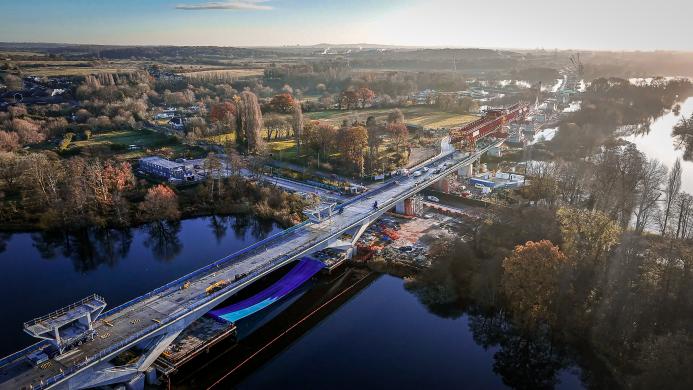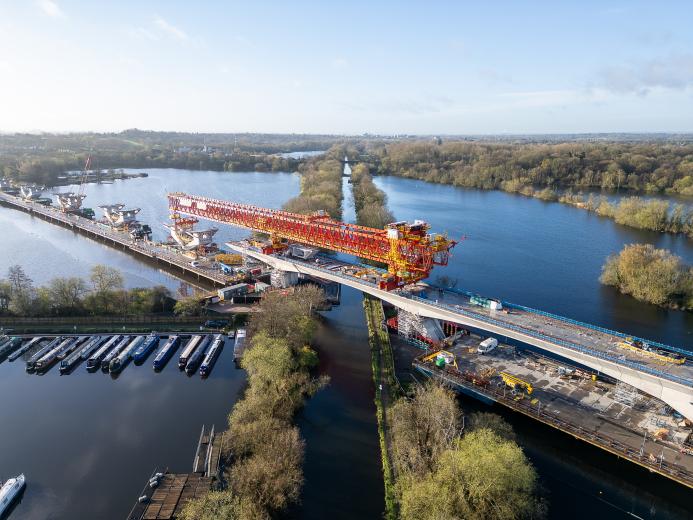Twenty-first and eighteenth centuries meet as HS2 traverses Grand Union Canal
New photographs and video from HS2 show the meeting of two engineering landmarks – as the UK’s longest railway bridge crosses the country’s longest canal.
The new images show the most recently completed section of HS2’s Colne Valley Viaduct after deck segments were laid to span the Grand Union Canal near Denham.
They juxtapose the new 225km-long high-speed London to Birmingham railway against the eighteenth century’s solution to connecting Britain’s two largest cities.
Both were built under powers granted by an Act of Parliament; arrive in the Birmingham district of Digbeth; and with similar lengths – HS2, 225km; the canal, 220km – were two of the largest civil engineering endeavours of their time.
The two differ dramatically in other respects. Compared to the sedate progress of canal boats high-speed trains will travel across the 3.4km-long viaduct at speeds of up to 323km/hour, completing the journey between the capital and Britain's second city in just 49 minutes.

Uniquely shaped and weighing as much as 140 tonnes, 755 of the viaduct's 1,000 concrete deck segments have been installed creating 39 spans over land and water for 1.5 miles.
News comes after construction of all the viaduct's 56 supporting piers was completed in advance of the deck being installed above.
Viaduct construction is led by HS2’s main works contractor Align JV – that includes Bouygues Travaux Publics, Sir Robert McAlpine and Volker Fitzpatrick.
Once complete, HS2 will provide faster and far more reliable journeys between London and Birmingham, with trains running on conventional lines further north. It will also double rail capacity between the UK’s two biggest cities – relieving the most congested southern part of the West Coast Main Line, and creating more capacity for local and freight services.

